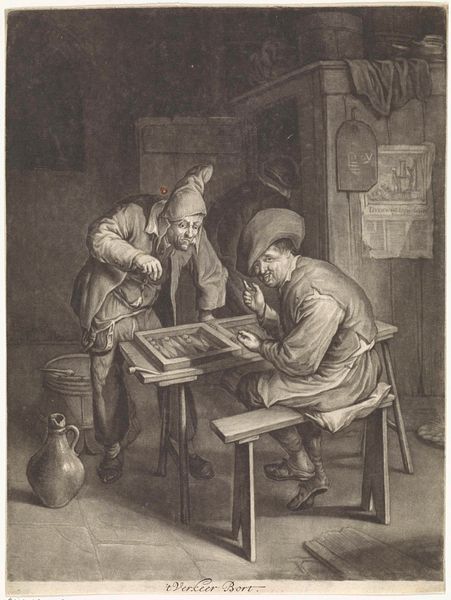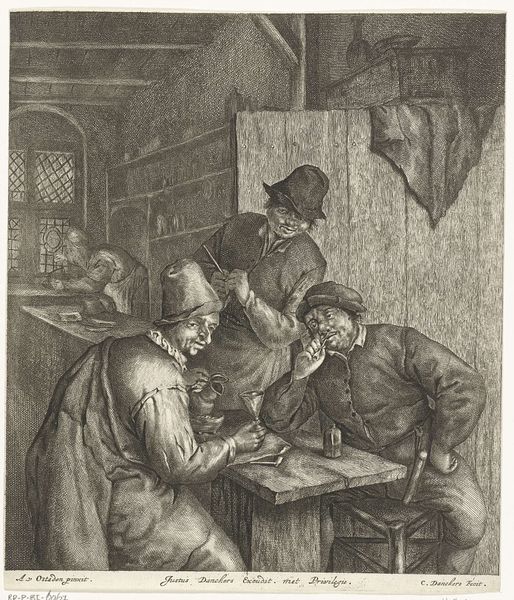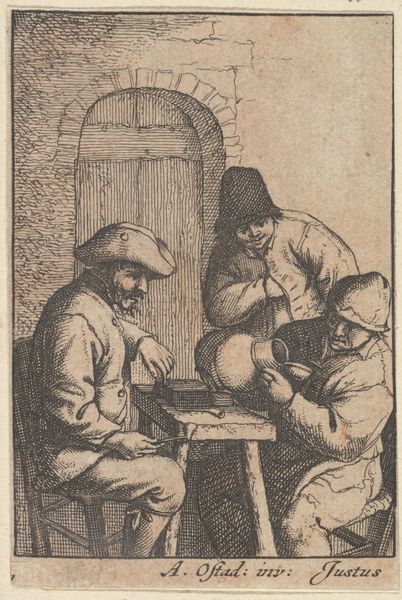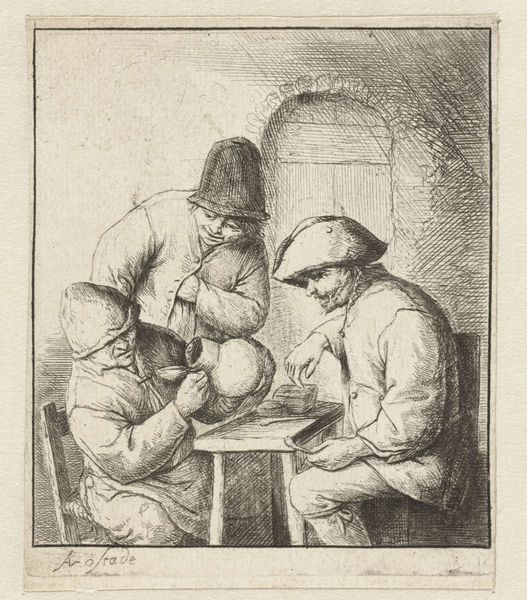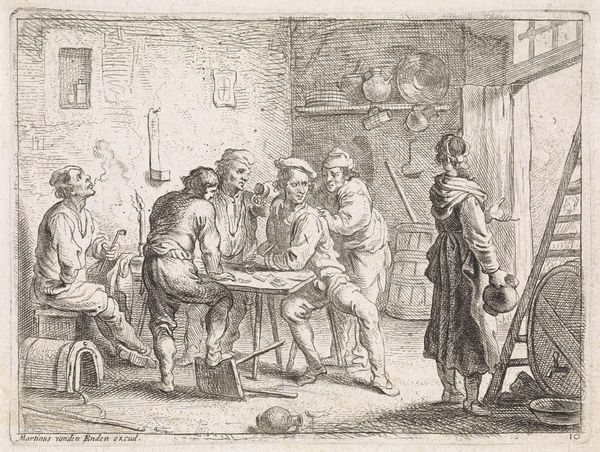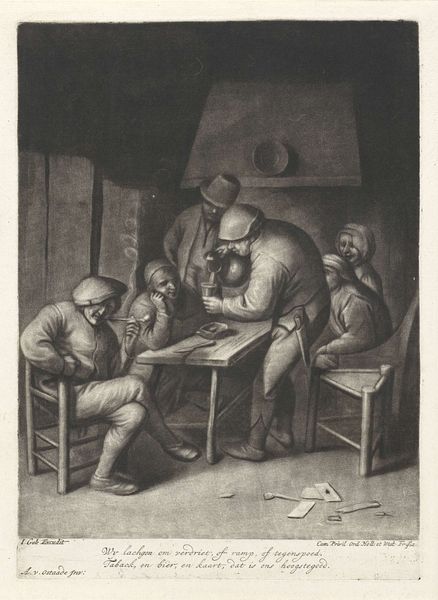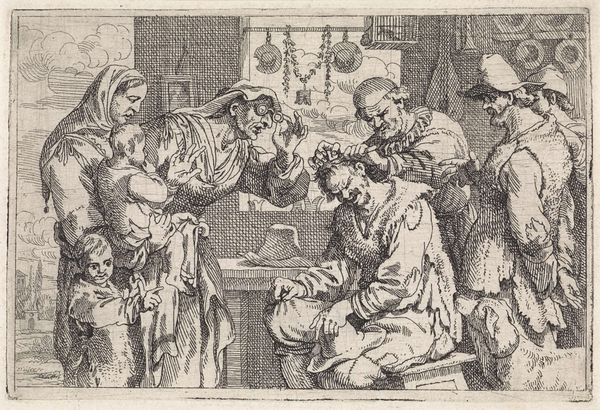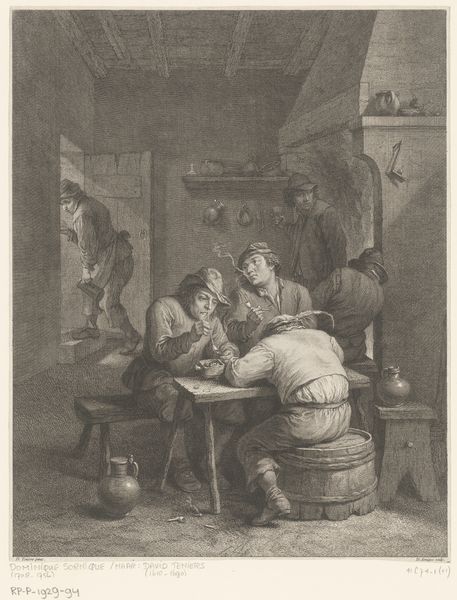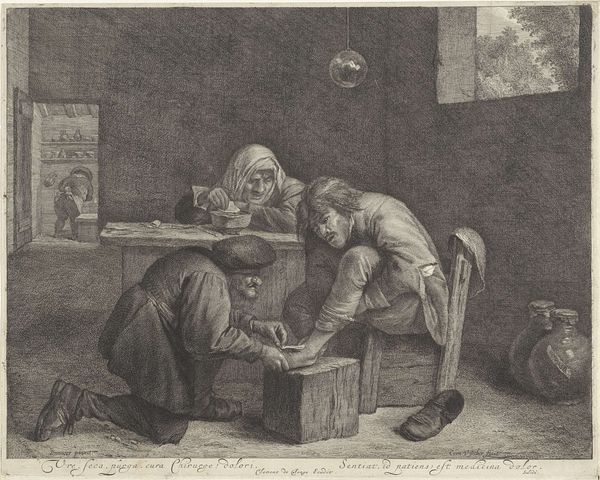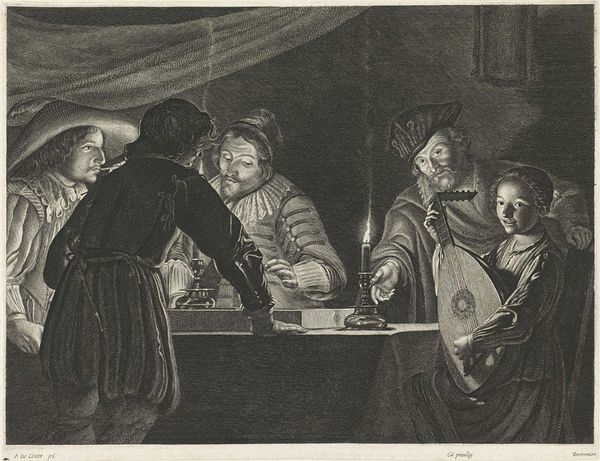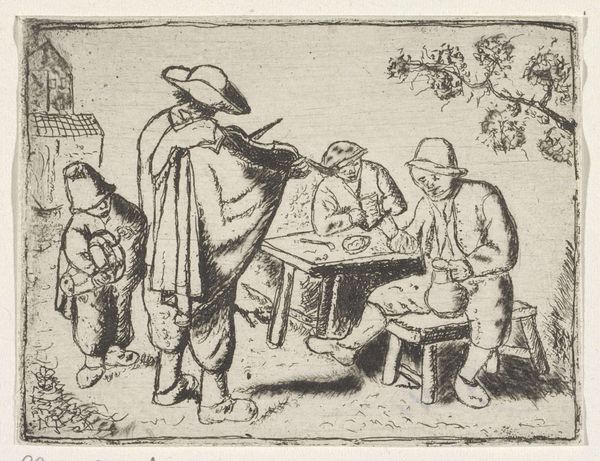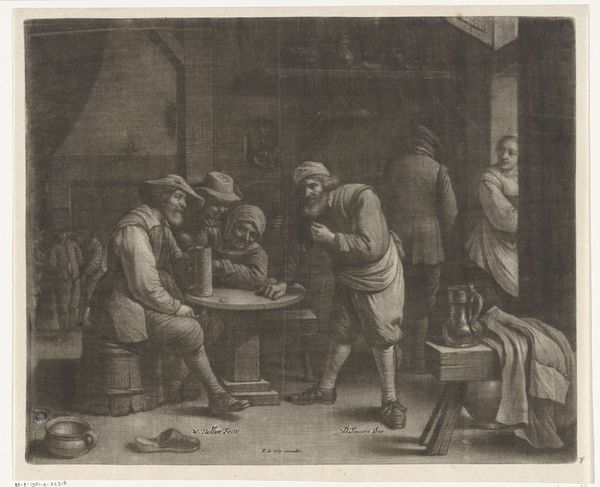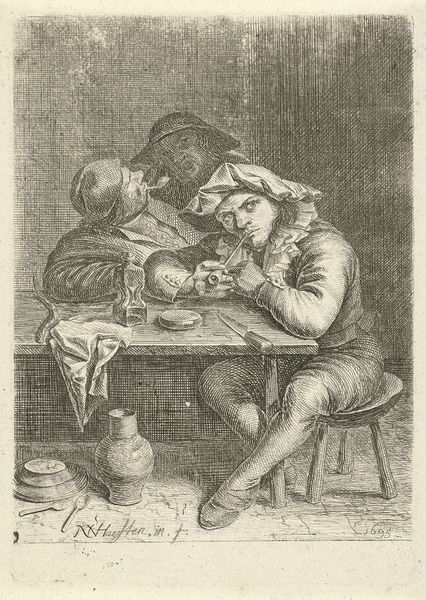
painting, oil-paint
#
portrait
#
figurative
#
baroque
#
dutch-golden-age
#
painting
#
oil-paint
#
oil painting
#
genre-painting
Copyright: Public Domain: Artvee
Editor: We’re looking at "Three Drinking and Smoking Farmers in a Tavern" by Adriaen van Ostade, painted around 1666-1667. It's an oil painting depicting, well, three farmers enjoying some leisure time. I find the scene incredibly intimate, almost like eavesdropping on a private moment. What strikes you most about this piece? Curator: What I find fascinating is the cultural snapshot it offers. These genre paintings, popular during the Dutch Golden Age, weren't just about depicting everyday life; they also served a didactic purpose, often moralizing. Editor: Didactic? So, there's more to it than just farmers having a good time? Curator: Precisely. Consider the setting, a tavern. In 17th century Dutch society, taverns were spaces where social hierarchies were often blurred. This painting presents the lower class, specifically peasants. By showing farmers drinking, smoking, and seemingly engrossed in their own world, the artist potentially critiques idleness, hinting at the social implications of such behaviors. How do you interpret their interaction? Editor: One’s trimming another's hat, one smokes, the other appears to be writing something... It seems quite mundane and...ordinary. Curator: Indeed, and that's where its commentary resides. Ordinary scenes, particularly depictions of lower social classes, weren't always celebrated. Genre painting offered a view into lives not normally given attention in high art. Now, think about who might have purchased a painting like this? Editor: Probably someone from the wealthier merchant class...maybe? To remind themselves of something? Or even decorate their walls? Curator: Exactly! And consider how that lens would alter the reception of the imagery. For a wealthy patron, the scene could evoke feelings of pity, judgement, or even a sense of superiority. They might interpret it as a reminder of the values they held, contrasting their own work ethic with the perceived laziness of the lower classes. Editor: That's a very different perspective. I initially saw just a cozy tavern scene, but now I understand how it can be interpreted through the lens of social commentary. Curator: Precisely. The painting reflects its historical context and invites us to explore how art functions within the framework of social and economic structures. A seemingly simple scene reveals itself to be imbued with layers of meaning and implications about Dutch society during the Golden Age. Editor: It is interesting how a seemingly casual moment like this can hold so much historical weight. Thanks, I'll never look at genre painting the same way!
Comments
No comments
Be the first to comment and join the conversation on the ultimate creative platform.
